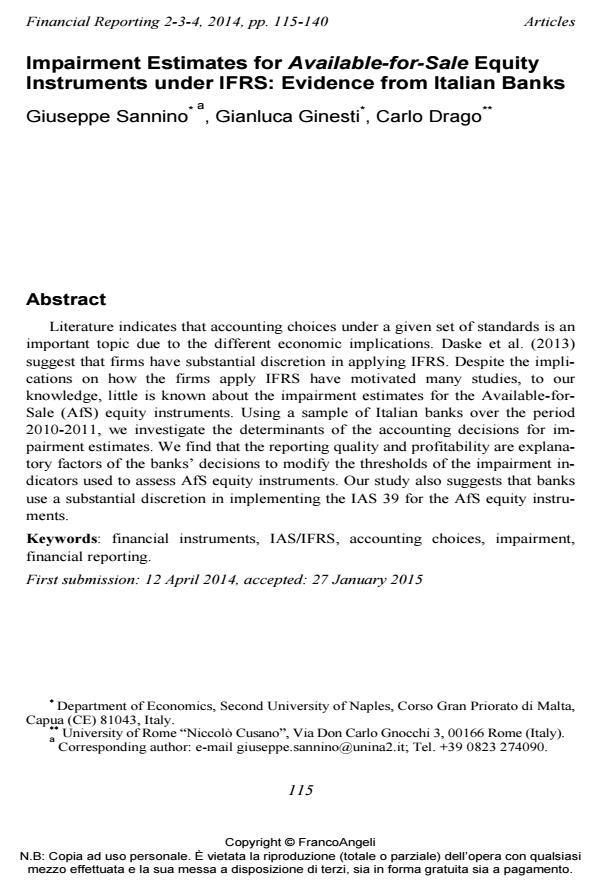Impairment estimates for available-for-sale equity instruments under IFRS: evidence from italian Banks
Journal title FINANCIAL REPORTING
Author/s Giuseppe Sannino, Gianluca Ginesti, Carlo Drago
Publishing Year 2015 Issue 2014/2-3-4
Language English Pages 26 P. 115-140 File size 301 KB
DOI 10.3280/FR2014-002005
DOI is like a bar code for intellectual property: to have more infomation
click here
Below, you can see the article first page
If you want to buy this article in PDF format, you can do it, following the instructions to buy download credits

FrancoAngeli is member of Publishers International Linking Association, Inc (PILA), a not-for-profit association which run the CrossRef service enabling links to and from online scholarly content.
Literature indicates that accounting choices under a given set of standards is an important topic due to the different economic implications. Daske et al. (2013) suggest that firms have substantial discretion in applying IFRS. Despite the implications on how the firms apply IFRS have motivated many studies, to our knowledge, little is known about the impairment estimates for the Available-for- Sale (AfS) equity instruments. Using a sample of Italian banks over the period 2010-2011, we investigate the determinants of the accounting decisions for impairment estimates. We find that the reporting quality and profitability are explanatory factors of the banks’ decisions to modify the thresholds of the impairment indicators used to assess AfS equity instruments. Our study also suggests that banks use a substantial discretion in implementing the IAS 39 for the AfS equity instruments.
Keywords: Financial instruments, IAS/IFRS, accounting choices, impairment, financial reporting.
- Why Do Firms Write Off Their Goodwill? A Comparison of Different Accounting Systems Francesco Avallone, Claudia Gabbioneta, Paola Ramassa, Marco Sorrentino, in FINANCIAL REPORTING 1/2015 pp.23
DOI: 10.3280/FR2015-001002
Giuseppe Sannino, Gianluca Ginesti, Carlo Drago, Impairment estimates for available-for-sale equity instruments under IFRS: evidence from italian Banks in "FINANCIAL REPORTING" 2-3-4/2014, pp 115-140, DOI: 10.3280/FR2014-002005